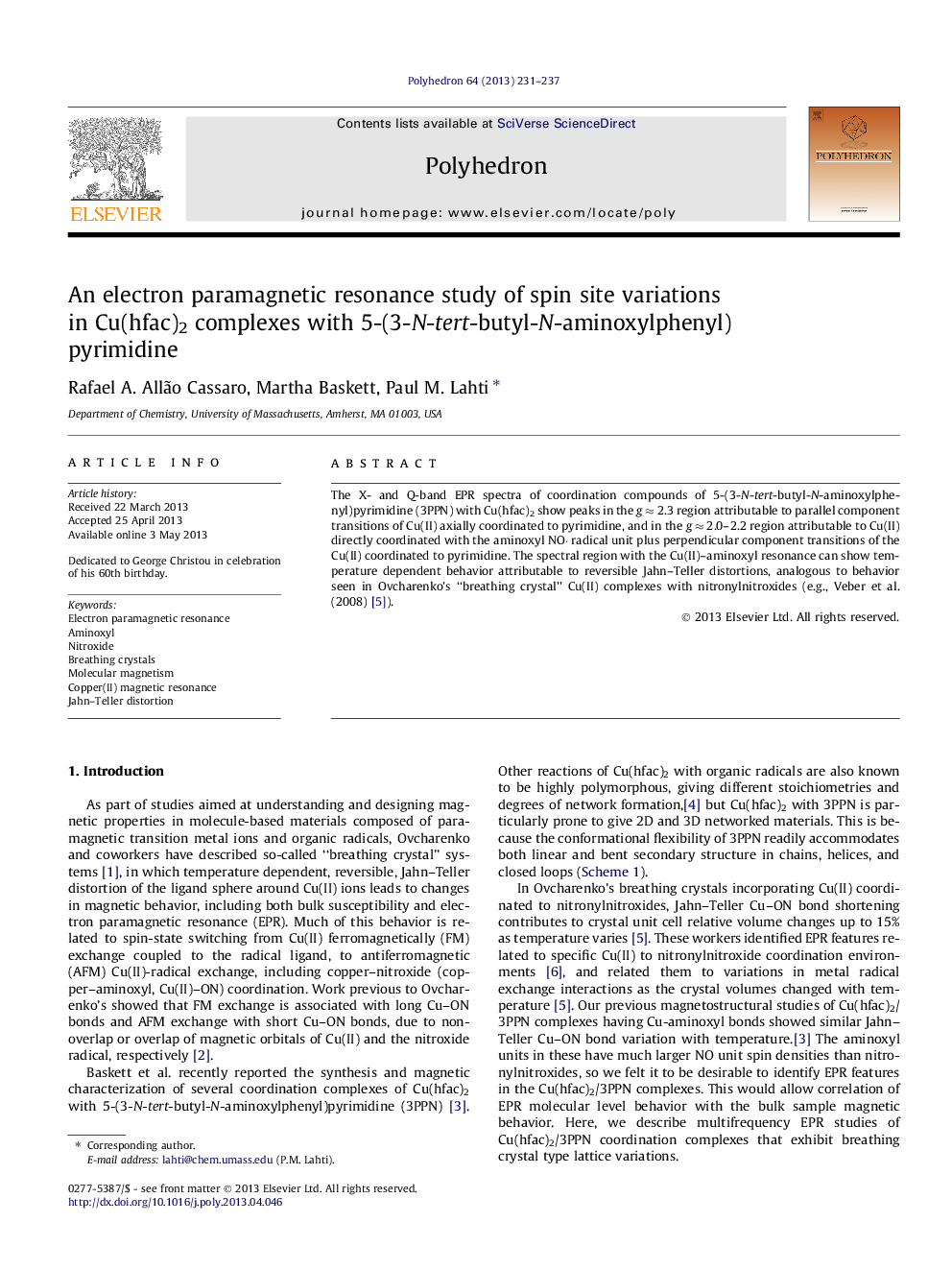| Article ID | Journal | Published Year | Pages | File Type |
|---|---|---|---|---|
| 1337045 | Polyhedron | 2013 | 7 Pages |
The X- and Q-band EPR spectra of coordination compounds of 5-(3-N-tert-butyl-N-aminoxylphenyl)pyrimidine (3PPN) with Cu(hfac)2 show peaks in the g ≈ 2.3 region attributable to parallel component transitions of Cu(II) axially coordinated to pyrimidine, and in the g ≈ 2.0–2.2 region attributable to Cu(II) directly coordinated with the aminoxyl NO· radical unit plus perpendicular component transitions of the Cu(II) coordinated to pyrimidine. The spectral region with the Cu(II)–aminoxyl resonance can show temperature dependent behavior attributable to reversible Jahn–Teller distortions, analogous to behavior seen in Ovcharenko’s “breathing crystal” Cu(II) complexes with nitronylnitroxides (e.g., Veber et al. (2008) [5]).
Graphical abstractX- and Q-band EPR spectroscopy of 0D, 1D, 2D, and 3D networked Cu(hfac)2 complexes with a conformationally flexible, conjugated, aminoxyl radical ligand enables identification of magnetically isolated and exchange-interacting Cu(II) ions, due to different resonance positions and temperature dependence of line shapes. The changes in spectra with temperature and structure can be correlated with the known geometries and Jahn–Teller distortion of the Cu(II) sites in the complexes.Figure optionsDownload full-size imageDownload as PowerPoint slide
